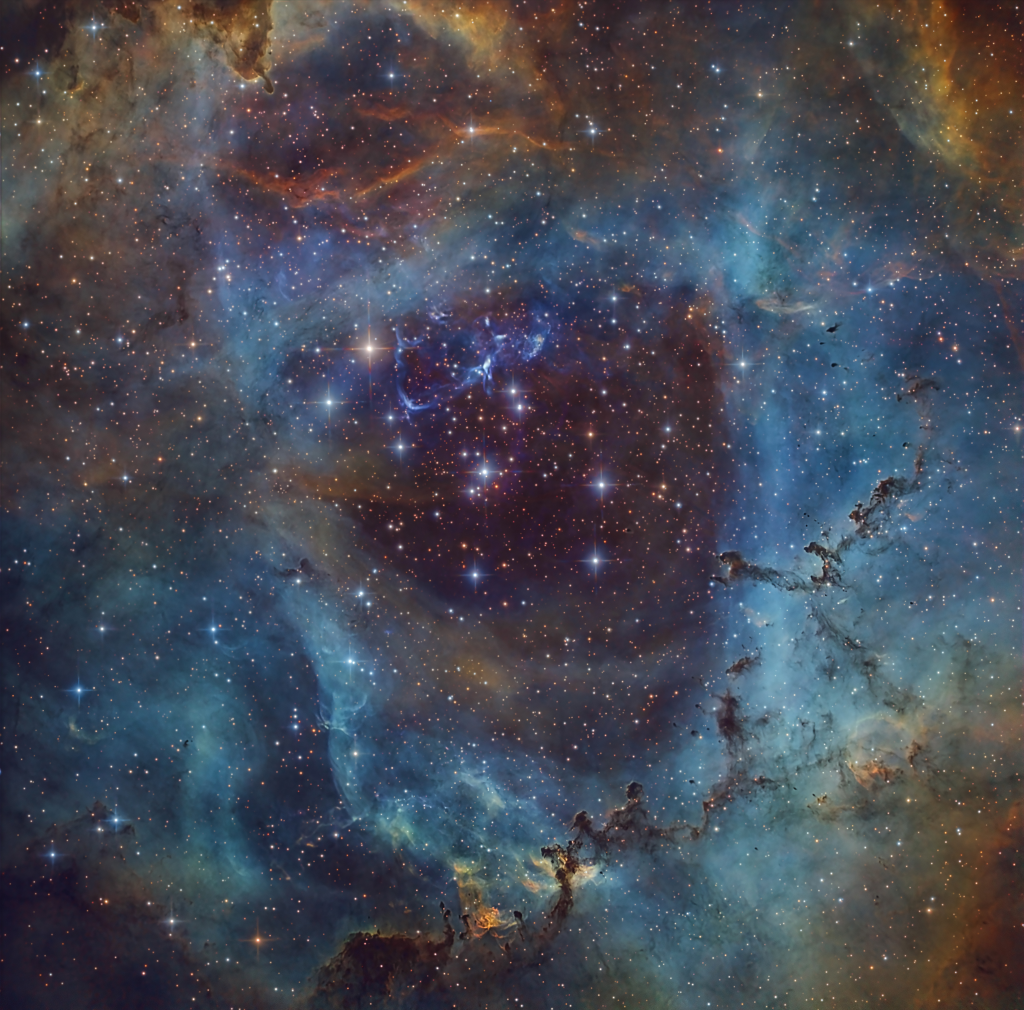當玫瑰不紅時
When Roses Aren't Red

來源:Tommy Lease|發表日期:2024-02-09
當然,並不是所有的玫瑰都是紅色的,但它們仍然非常漂亮。同樣,在天文影像中,美麗的玫瑰星雲和其他恆星形成區也經常呈現出以紅色為主的色調,部分原因是星雲中的主要輻射來自氫原子。氫的最強光學發射線,即 H-alpha,位於光譜的紅色區域。但是,發射星雲的美麗不一定只能透過紅光來欣賞。星雲中的其他原子也會被高能星光激發,併產生狹窄的發射線。在這個玫瑰星雲的特寫檢視中,窄帶影像被對映成寬頻顏色,以顯示紅色的硫原子、綠色的氫原子和藍色的氧原子的發射。事實上,將這些窄原子發射線(SHO)對映成寬頻顏色(RGB)的方案在許多哈勃發射星雲影像中都被採用。這幅影像橫跨玫瑰星雲中心約 50 光年。該星雲位於約 3000 光年外的摩羯星座。
原文:Not all roses are red of course, but they can still be very pretty. Likewise, the beautiful Rosette Nebula and other star forming regions are often shown in astronomical images with a predominately red hue, in part because the dominant emission in the nebula is from hydrogen atoms. Hydrogen's strongest optical emission line, known as H-alpha, is in the red region of the spectrum. But the beauty of an emission nebula need not be appreciated in red light alone. Other atoms in the nebula are also excited by energetic starlight and produce narrow emission lines as well. In this close-up view of the Rosette Nebula, narrowband images are mapped into broadband colors to show emission from Sulfur atoms in red, Hydrogen in green, and Oxygen in blue. In fact, the scheme of mapping these narrow atomic emission lines (SHO) into the broader colors (RGB) is adopted in many Hubble images of emission nebulae. This image spans about 50 light-years across the center of the Rosette Nebula. The nebula lies some 3,000 light-years away in the constellation Monoceros.
※ 本文由萌芽機器人自動轉貼自每日一天文圖(Astronomy Picture of the Day,APOD),原文為英文,正體中文是透過 DeepL 翻譯及 OpenCC 進行自動處理,內容僅供參考,若有任何錯誤之處還請見諒!
關於每日一天文圖:每日一天文圖網站是美國國家航空暨太空總署與密西根理工大學提供的服務,網站每天提供一張影像或圖片,並由天文學家撰寫扼要說明其特別之處。